
Many of us have found ourselves in unexpected and occasionally unwelcome positions since March of this year. With so many people at home by choice or otherwise, and with few places available to go, people have quickly looked for safe ways to entertain themselves. One can only watch so much daytime TV, and after you’ve binge-watched all the shows you follow on Netflix or Amazon Prime, what’s left? Well, there IS work, if you are working from home. But even still, a distraction and calming respite from the myriad tensions and stresses of this most… um… “interesting” year is our backyard birds.
They’ve always been there, more apparent to some of us than others perhaps, and in greater numbers in some places than others. But when you’re stuck inside and can only look out the windows, you start to see more. And you get more and more interested. “What are these little feathered balls of energy I’m looking at? What do they eat? Why do they act like they do? Oooh, what’s that one? I never noticed it before. Maybe I’ll go buy a feeder and put some food out for them.” And so, it begins.
Feeding backyard birds is nothing new and has been done by millions of people over the years. I grew up in a house where my mother always put out seed for the birds. That was back in the 60’s. There was an invasion of these pretty little finches from Canada with red spots on their foreheads one winter in the 70’s. Common Redpolls headed south in huge numbers seeking food, as their usual sources were depleted or inaccessible due to the severe winter. This was my first encounter with a completely new and unexpected bird species, and it hooked me for life.
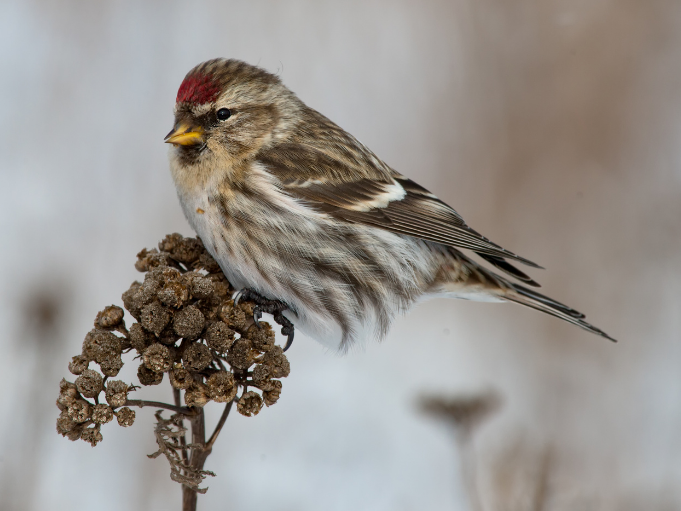
Being home for an extended period makes one’s mind wander. I wasn’t alone with that problem during the snowstorm that severe winter and I’m not alone now. Many of us who are stuck peering out the window discover a new dimension to the yard or gained greater appreciation for what they may have already been aware. You can be pulled into it quick. Many take the opportunity to expand our offerings spending more time observing the comings and goings and antics of the House Finches, American Goldfinches (our state bird), Black-Capped and Carolina Chickadees, Carolina Wrens, White-Breasted Nuthatches, Downy Woodpeckers, those confusing sparrows, and more. We notice how some prefer certain seeds over others, and maybe start offering foods for specific birds. But mostly, we notice the calming effect it has on us. It makes us feel more connected to nature and feel good inside knowing we are helping these little creatures out.
Since 1970, North America has lost approximately 25% of its total bird population. One in four birds are gone. That’s nearly 3 billion birds. Many articles have been written about it, such as, “Vanishing: More Than 1 in 4 Birds Has Disappeared in the Last 50 Years” by Gustave Axelson, published on the Cornell Laboratory of Ornithology’s website, September 19, 2019. Those of us who have been feeding birds over the years have noticed this. Fewer birds overall, and fewer species. People new to the hobby may not be as aware. However, their presence now can have a positive effect. More people feeding birds will help their numbers. Feeding can lead to increased nesting activity. Perhaps many of the newly converted are putting out birdhouses and/or nesting materials, so that their newfound friends may stick around. After 40+ years, I still get a charge out of seeing a new face peek out of a house I’ve put up.
All the new folks feeding, providing nesting materials and sites, are helping stem the tide of losses. There are too many to be reversed, but we can slow and stabilize it. By nature, most people want to do well. When they find out it’s not actually difficult to help the birds, their involvement level can increase. The National Wildlife Federation (an EarthShare member) offers a program to have your yard identified as Certified Wildlife Habitat. People are now landscaping, planting native flowers, native fruit, and seed-producing plants. They are also providing water sources, in addition to the seed and feeders they’ve been providing, as well as starting to utilize non-toxic, sustainable yard upkeep practices. These small steps all combined can make a big difference. Not only have they created a sanctuary for the birds, they’ve created a sanctuary for themselves to tune out the static and focus on something that can relax them and make them happy.
So, let’s talk a little about these birds. What can you expect to see in New Jersey? This is kind of a difficult question, since there are so many different habitats in the state, despite its relatively small size. However, there are some commonalities. I’ve already mentioned several birds earlier. Few are not familiar with the “dee, dee, dee” of a chickadee, be it Carolina or Black-capped. Generally, the northern part of the state has Black-Capped, and the southern has Carolina. There’s a band of overlap in central NJ, so becoming familiar with the individual calls can be helpful.
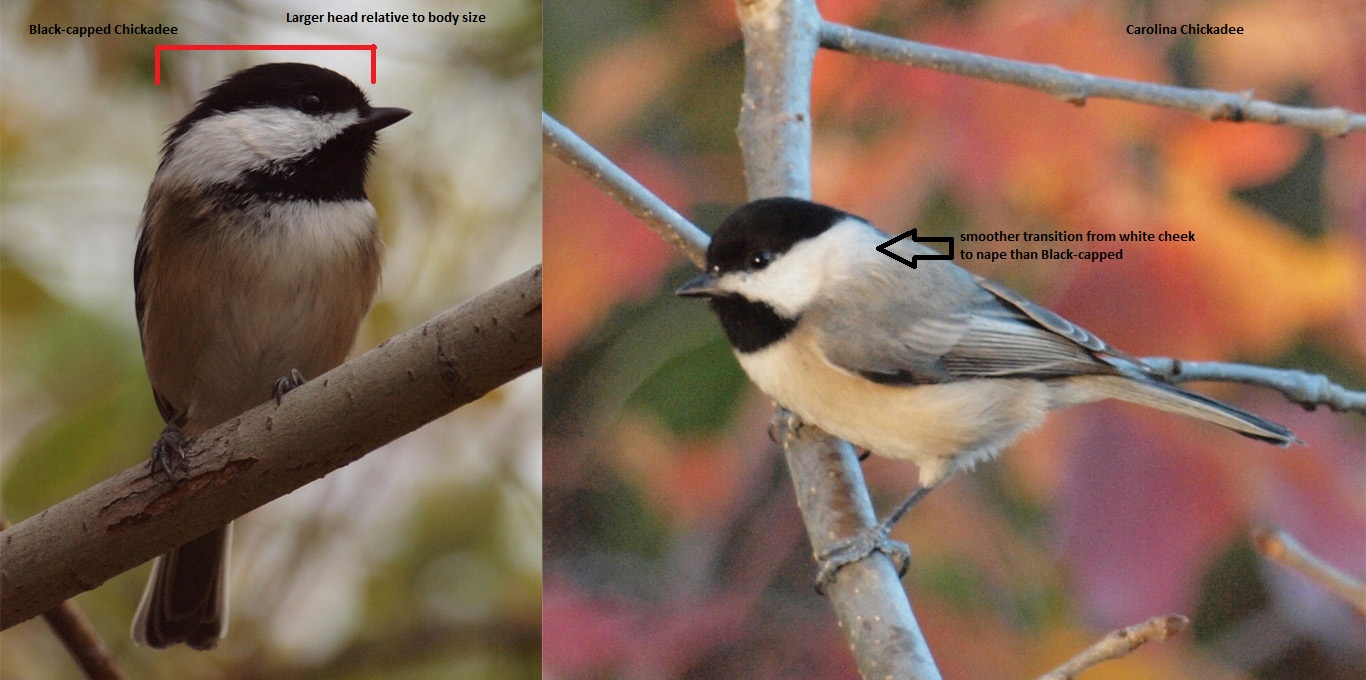
So, what else can you expect to see once you start feeding? I think everyone is familiar with Northern Cardinals, somewhat on the shy side, and Blue Jays, a bit more boisterous. Downy Woodpeckers are relatively common, often seen on tree trunks and branches, looking for tasty bugs under the bark. Other woodpeckers that are frequently seen are Red-Bellied Woodpeckers and Northern Flickers. If you’re in a heavily wooded area, you may get lucky and have the crow-sized Pileated Woodpeckers visit. White-Breasted nuthatches readily come to feeders, amusing in their gravity and physics-defying antics…how do you “hop” underneath a branch?
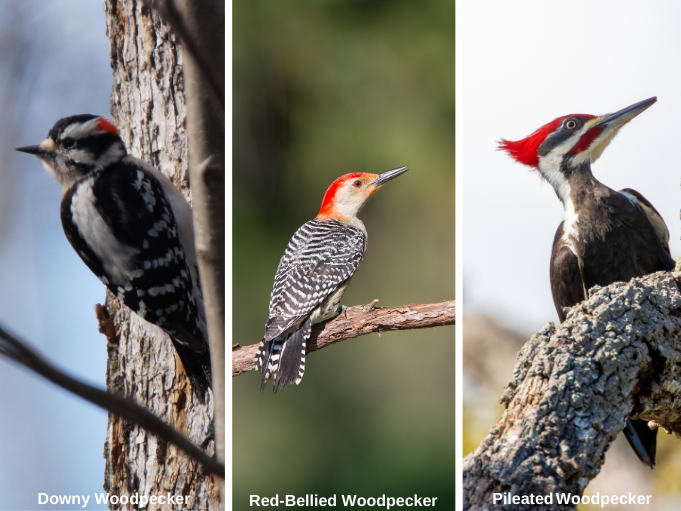
In the spring, the “peter, peter, peter” call of the Tufted Titmouse is heard. They will love to take shelled peanuts from your feeders. Now, we cannot forget those confounding sparrows. They’re all brown and streaky. The common ones in your yard will most likely be seen fall through spring. This includes White-Throated Sparrows, Song Sparrows, Dark-Eyed Junco (a.k.a., “snowbirds”), maybe Tree Sparrow, Field Sparrow and the big, rusty Fox Sparrow (nearly cardinal-sized!). Telling sparrows apart is not terribly difficult by looking at some key features. White-Throated Sparrows, in addition to their white throat, have dark and light stripes on their head which are often very bold black and white with two yellow spots near the bill. Song sparrows are more nondescript, being streaky all over and usually have a spot on the breast. Juncos are the easy ones, medium to dark slate gray above and white below. Spend a little time to study them and you’ll be telling them apart before you know it.
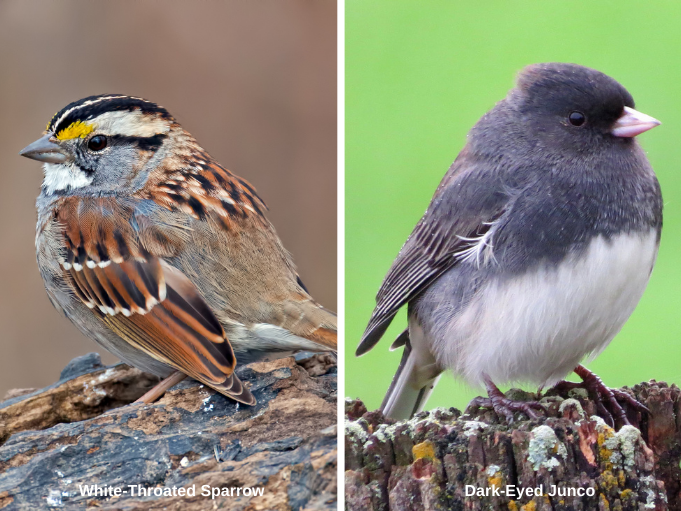
Our state bird, the American Goldfinch, is quite attractive. The males are mostly bright yellow during breeding season, while the females and the males from fall through spring are more of a muted olive color. The other typical finch is the House Finch, an import from the western US that spread from some released cage birds around New York City in the 1940’s. Males have variable coloring, showing orange to deeper red over a pale and gray/brown streaky background. Females lack the reddish coloration. Purple Finches may visit from the north, distinguished by having a paler background color and a slightly smaller, straighter bill. The males looking like they’ve been dipped in raspberry juice.
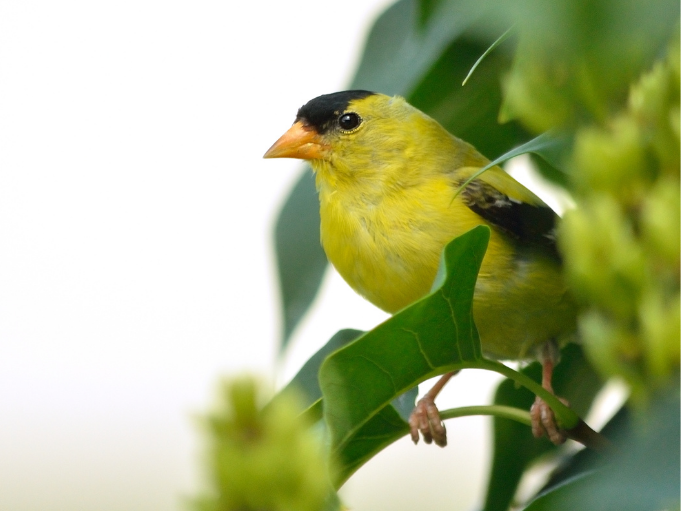
Wrens are some of my favorite birds. We typically see two wrens in our yards. The Carolina Wren has a white stripe through its eye and is usually present year-round, while the House Wren is a more subtle soft brown and is around spring through fall. Both are very high-energy, curious birds, and have calls of a volume that belie their small size. Both will readily take to nest boxes, though the Carolina Wren is usually the only one seen at feeders. They will eat shelled peanuts, dried fruit, berries, suet and insects. I dare you not to fall in love with their ebullient “chirpity, chirpity, chirp” song. I can only describe the song of a House Wren as “explosively happy.”
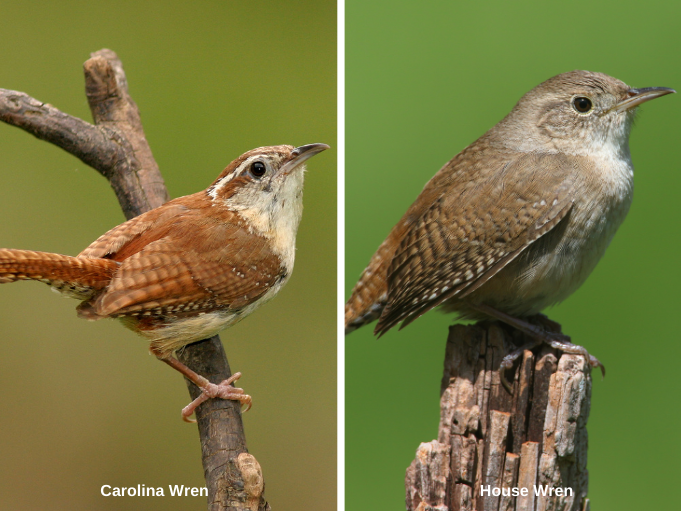
Others you may see at your feeders are Mourning Doves, Common Grackles, Brown-Headed Cowbirds, European Starlings (an import), House Sparrows (another import), Red-winged Blackbirds and Gray Catbirds. Others that will most likely be in your yard but typically do not visit feeders are American Crows, Northern Mockingbirds and American Robins.
I would be remiss if I did not mention Ruby-Throated Hummingbirds! Few birds can bring as much happiness to a yard as these feathered jewels. You may find yourself host to these tiny creatures from late-April through September by planting red, nectar-producing flowers and putting out hummingbird feeders filled with a 1:4 table sugar (pure sucrose) and water solution (no other sweeteners, additives or colorants, please, they may be harmful or fatal). Should one or more show up, you’d do well to put out another feeder out of sight of the first one, as one bird will “own” and “guard” one feeder and chase off interlopers. For their size, about 1/10 of an ounce, they can be rather pugnacious and fearless.
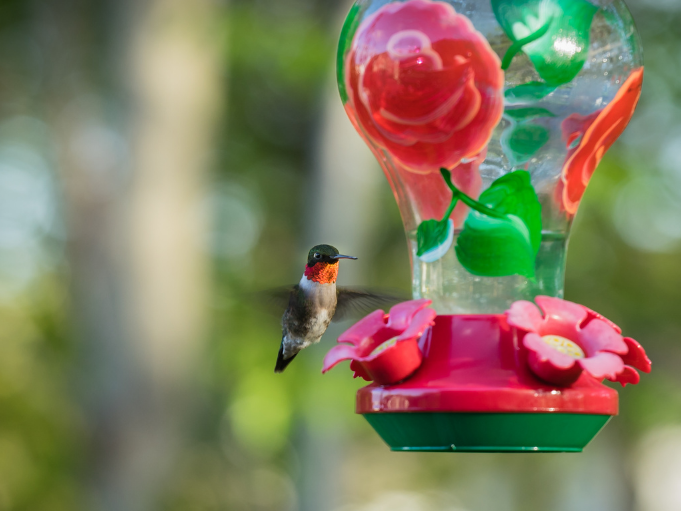
Lastly, the predators! One thing to keep in mind when you begin to feed the birds, you sign an unwritten contract to feed ALL the birds who are attracted to your feeder. It may not be the seed that attracts them! Cooper’s Hawks, Sharp-Shinned Hawks, Red-Tailed Hawks and Red-Shouldered Hawks will all take an interest in the birds visiting your feeder. This is a good thing! It means you have a great habitat in your yard and that you’re helping these birds too. First year raptors often have a mortality rate approaching 80%; only one out of every 5 fledged makes it to next year. The ones that “raid” feeders are often young, inexperienced birds just trying to survive. It may seem counterintuitive to allow a predator to feed on the very birds you are attempting to help, but they need help too. There are not enough predators to have a negative impact on most species’ numbers, and they help improve the overall health of a species by weeding out the sick or weaker ones. Though you most likely won’t see them, there may be owls that will enjoy the presence of the mice and voles that come to eat the seed on the ground at night.
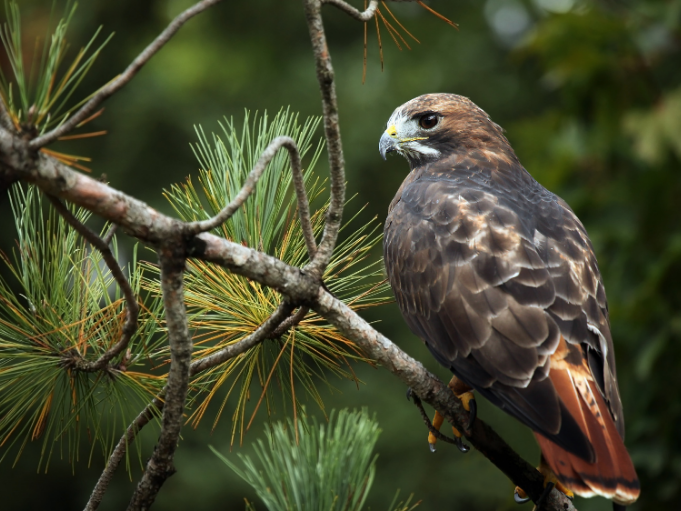
So, next time you’re feeling stressed, uptight or depressed about the COVID-19 situation or anything else, grab a cup of your favorite beverage, plop yourself in front of a window, and watch your feeders. Forget about the troubles of the world and connect with nature from a nice comfy chair.
Happy feeding!

Mike Lenker
Passionate birder and
long time EarthShare NJ Rocks volunteer
For species information and identification, try www.allaboutbirds.org/guide/
Interested in what birds are around you? Have a look into www.ebird.org